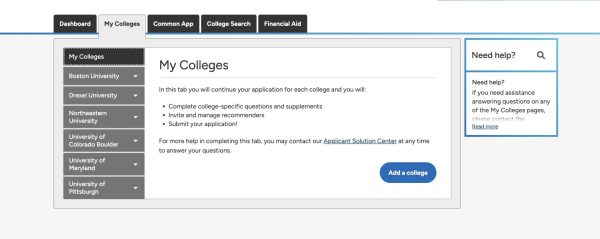Debate: Would combining Berlin, Gibbsboro, and Voorhees into a K-12 make sense?
No. Possible short-term gains would not counter long-term problems
Students are divided on the possibility of school consolidation
Education is the backbone of every society. In order to ensure a nation’s prosperity, it is imperative to make sure that it is able to provide the best education possible to youth who will grow up and carry it.
So why, in that instance, deprive those students of the highest quality of learning possible?
By increasing expenses, taking away local choice, and not giving voices to smaller school districts, school consolidation will do just that.
The best example of the dangers of school consolidation cost-wise can be found in Illinois. According to the Reference Desk, more than one hundred Illinois school districts have merged.
Of the schools that merged, for four years the districts received general state aid, a grant to pay the difference in teacher salaries, a one-time grant to cover negative fund balances, and $4,000 per certified staff member. While these sums of money are very enticing, it’s important to keep in mind that they only received the benefits for four years.
What was going to happen when that money ran out and the schools only received taxpayer dollars as per usual?
While there was more money going into the conjoined schools, there was no surplus. They were making the same money that the individual schools were making before merging, except now transportation costs were at a high due to students from other towns having to come to a new one.
This was money that could have been spent on bettering the quality of the school.
When I attended Orville-Wright Middle School, a school that was merged with one near Los Angeles, I experienced firsthand the negative effects of consolidation. Orville-Wright is a STEAM school that is supposed to provide good education for students who excel in the areas of science, technology, engineering, arts and mathematics,.When I attended, however, it lacked the funding that was needed to carry out many of the special programs.
In my aviation class where we learned how to fly planes, there wasn’t enough money for the plane simulator that was promised in the course description, so we stuck to taking guided notes out of beat up textbooks.
One of the biggest consequences of school consolidation is the fact that it takes away local choice.
For instance,
as a result of a highly controversial law passed in Maine in 2007, local school districts were forced to merge with others. If not, they were slammed with penalties. Though the law has been amended (mostly due to criticism) to remove said penalties, it’s still in place today. A lot of schools don’t want to merge with others not only because of the costs, but also because they would rather be on their own.
Imagine a law being set into place that made Eastern High School merge with Lindenwold. That means that all of the kids from that school would be coming here, along with their staff and the maintenance that comes with them, including double the amount of disciplinary enforcements.
Schools that are anti-consolidation are completely justified in their weariness.
Let’s imagine, for a moment, that a law requiring the merging of school was passed in New Jersey.
Think of a small school district, such as Bass River Township, a district with only 102 students enrolled, merged with Newark Public School District, a district with over 38,000 students enrolled. Bass River Township be swallowed by Newark not only population-wise, but representation wise.
Administration from the smaller district would have virtually no say in board decisions due to a lack of staff, and Newark would be the only ones who made any real change.
The only benefit of school consolidation is money for a short period of time. Merging schools does more harm than good, and many schools are aware of this.











